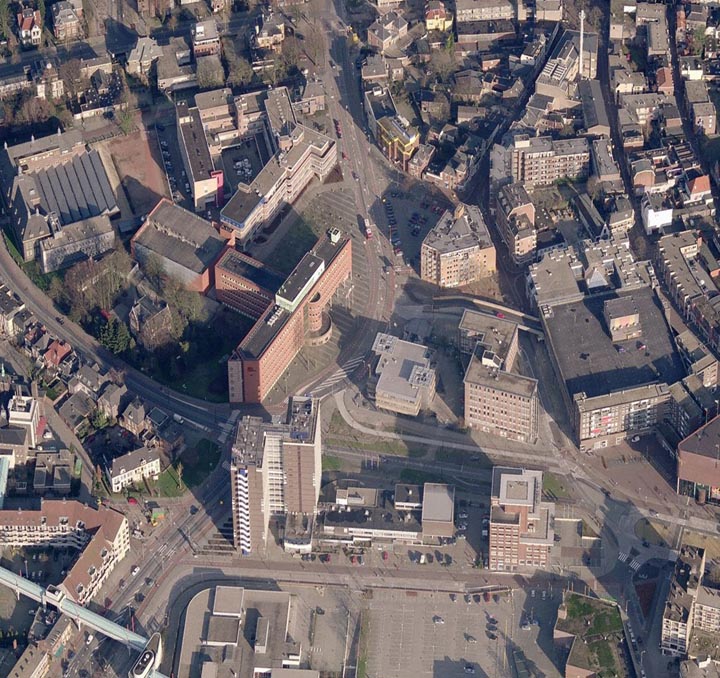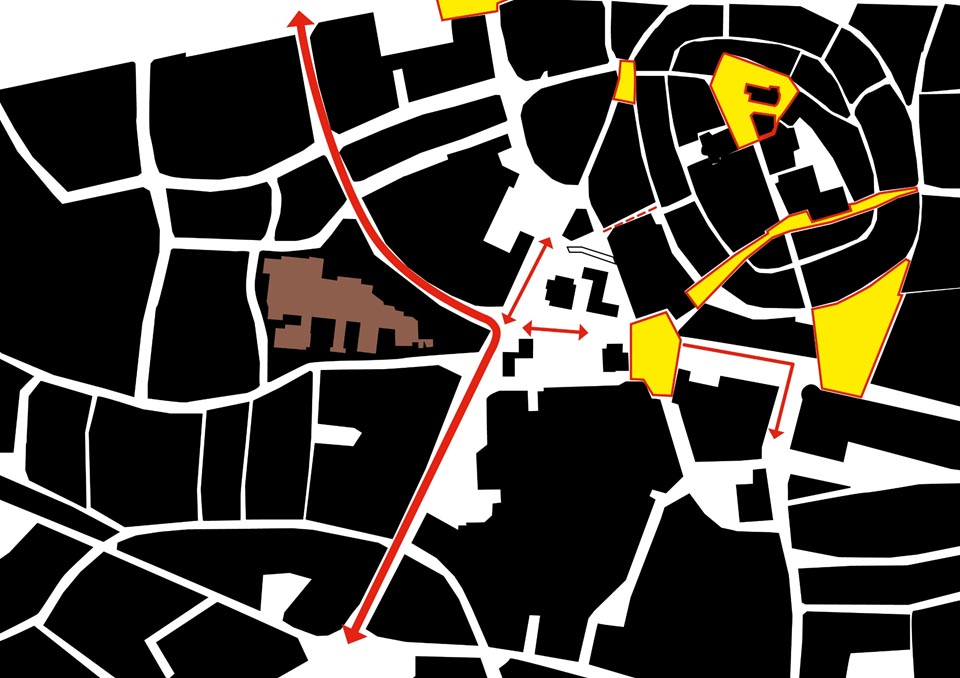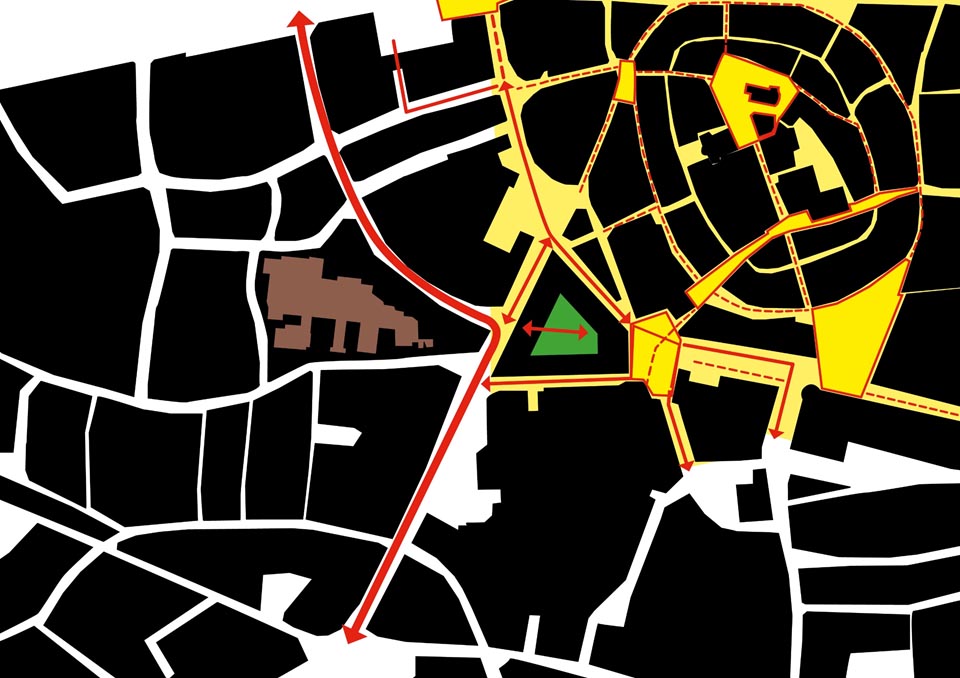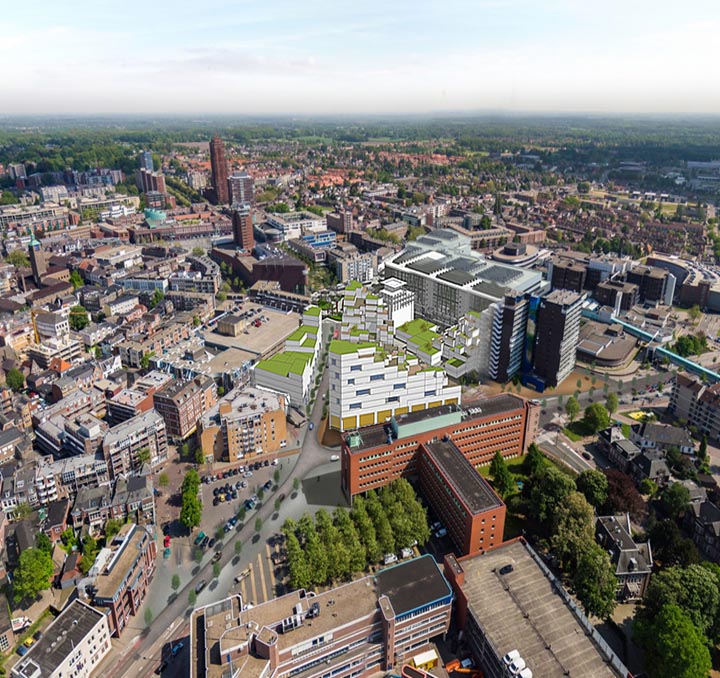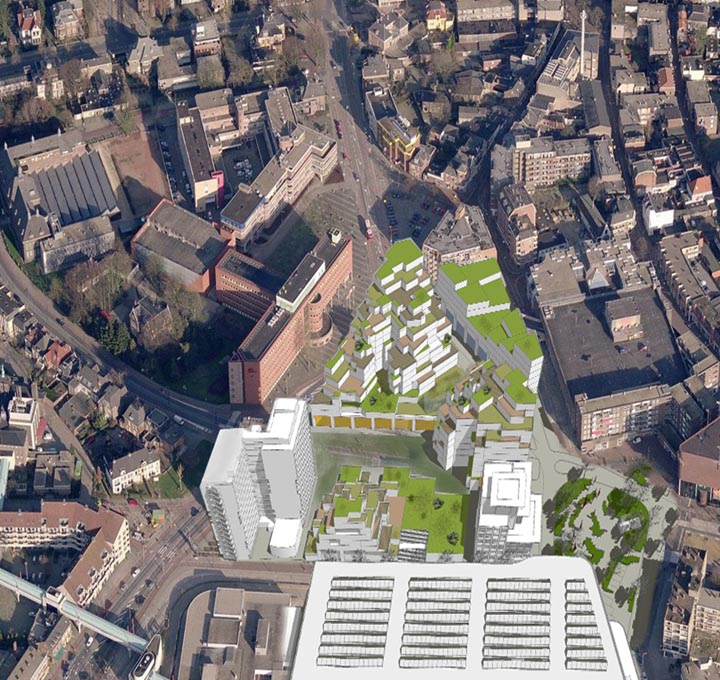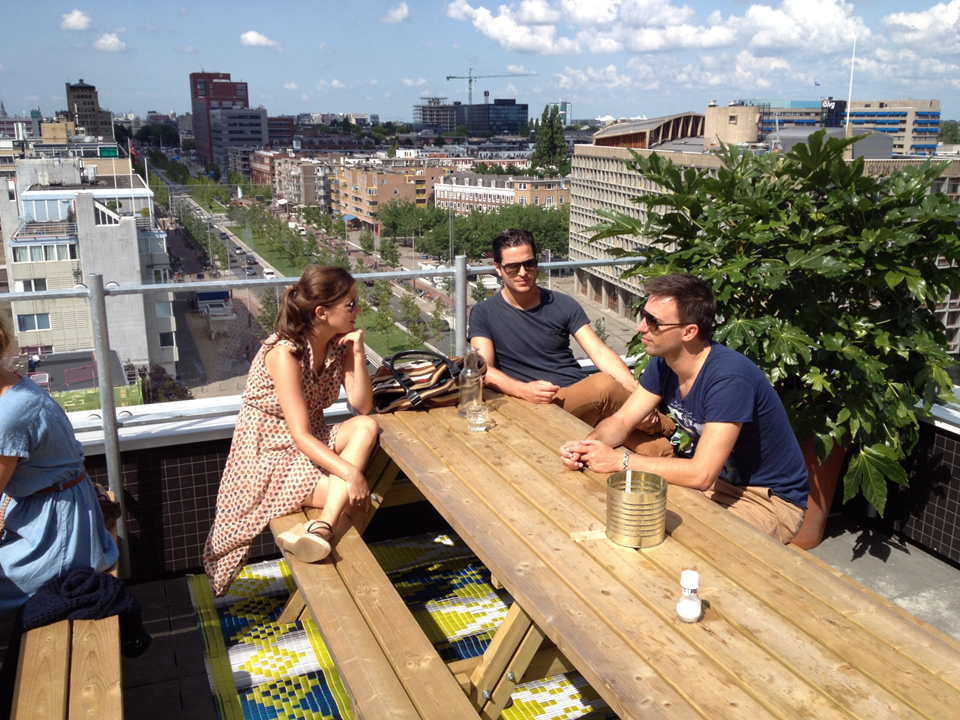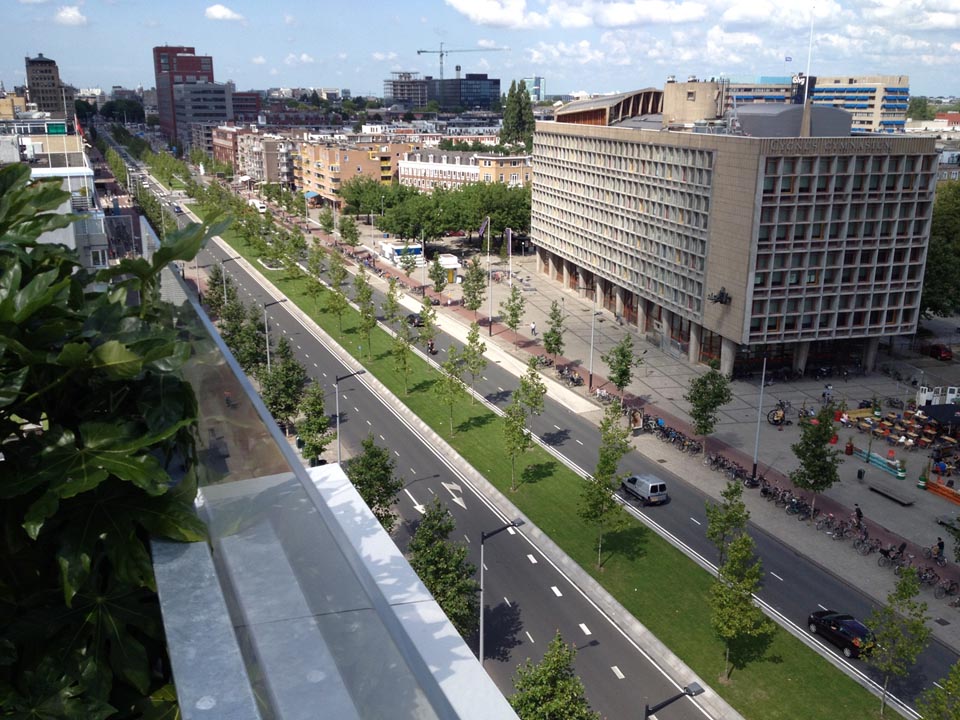Nobody watches a movie all hours of every day. Most people see the city every day for years. The results of urbanism should please far beyond first sight, the richer the use and imagery are, the more stories are suggested, the more people will like it. Density helps. Density is the first step in sustainability. High densities mean efficient use of space and amenities, avoiding use of valuable land outside the city. Density facilitates public transport and sustainable systems for power and heating . A single car can be a sexy object. Car traffic is to be tamed in the city. Mass car traffic belongs to the landscape, it is out of town. Public transport can be integrated in a city. Creating neighborhoods that are comfortable for pedestrians and cyclists where people can see and hear each other, not too big, not anonymous, still public, combined with diverting large scale car traffic underground proved to be the solution in Amsterdam’s former harbor and is a solution for many cities in the world. In the design for Central Station island in Amsterdam everything was organized under and above the main level, the grade level of the city for pedestrians and cyclists. In a plan for a small but crucially located part of the inner city of Dutch Enschede, three new streets create a new whole by connecting formerly dispersed parts of several recent periods. Separate bus lanes feeling empty and dangerous, are changed into streets with mixed use. The mix of pedestrians, cyclists, cars and buses predominate instead of one bus every sixty seconds. Public space is the essence of the city. Electronic devices and virtual realities will only add to its importance, few people make selfies on a bus lane or in a business park.
Public space has to feel good for the lonely wanderer as well as for the crowd on a busy day. The queen or the prime minister use the London Mall only once or twice a year. It still feels good for the jogger on a rainy day. Urban design can organize the use and must define the interface between the private and public. Time is important in urbanism, historical and future time as well as the speed of movement and the different ways of seeing objects that are connected to the ground. I like the contrast between moving and fixed objects, the possibilities of play with visibility that it generates. Good urbanism offers people a wide variety of possibilities to relate to one another and to society. In the former eastern harbor the width of a pier generated the possibilities for the new section. In the final design for Houthavens artificial piers of different widths were created by digging new canals. Every pier will have its own typology of public space and relation of private to public space. A high density of possibilities for architects to use. Beauty comes from unexpected causes. Bijlmermeer or Brasilia are beautiful as almost perfect extrapolations of their scale models and strict implementations of clear concepts. My favorite beauty comes from the superior improvisations displayed in Italian mediaeval and renaissance towns. In the best Italian piazzas the designers play with and talk to each other over generations. Density of stories, of concepts, of people attract tourists now even as Amsterdam’s transformed Docklands do.
